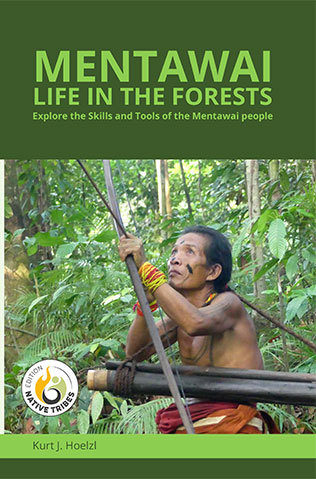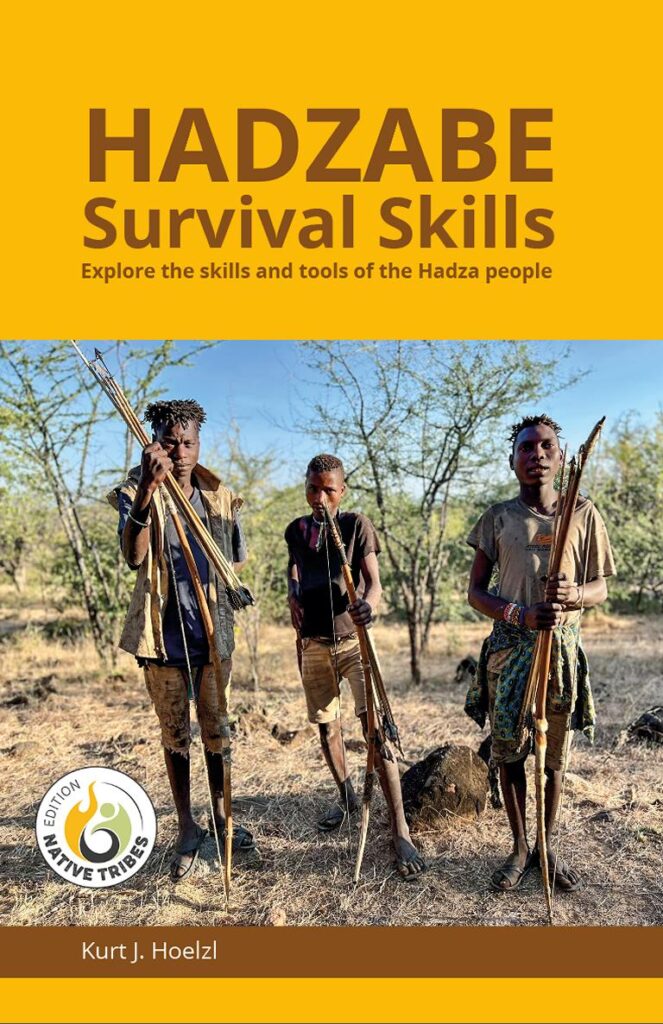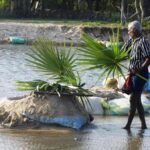In the spring of 2025, I traveled to Western Australia to document local survival techniques used by Indigenous people. Across Australia, Indigenous groups are generally categorized into three main types: the so-called ‘Saltwater mobs,’ who live along the coast; the ‘Desert mobs,’ who inhabit the arid inland regions; and the ‘Freshwater mobs,’ who settle along major rivers.
My teacher
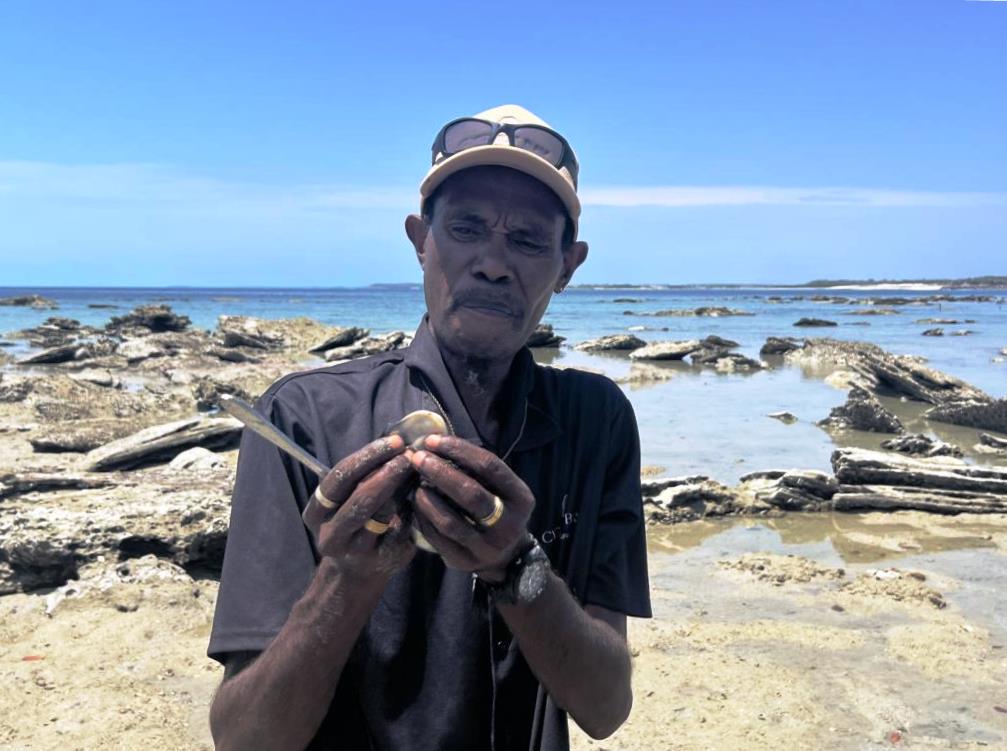
I had the opportunity to meet members of three different ‘Saltwater mobs’ and was fortunate to go on a foraging trip with Terry Hunter, a Bardi man, at the remote northern tip of the Dampier Peninsula. Terry had worked for many years as an assistant to Malcolm Douglas, the legendary Australian survival expert of the 1980s. Both Terry and his father were the Indigenous mentors from whom Malcolm acquired much of his survival knowledge. For them, these skills were simply part of everyday life. It was only the ‘Europeans’—as Indigenous Australians call all non-Indigenous people—who later categorized them as ‘survival techniques.’
Terry demonstrated a method for efficiently providing food for a large group of people using minimal resources. He was eager for me to document this technique, as he believed that only Malcolm had previously filmed it and that it had never been written down in any book.
Interestingly, this was the very same technique I recalled most vividly from my former times, when I lived with my family in Australia in the late 1980s. Malcolm Douglas’ films had left a lasting impression on me, and it felt like an incredible twist of fate to now learn the technique firsthand from its original practitioner.
Burning method for oyster harvesting
The method itself is simple: in a suitable coastal area, dry grass is burned over rock oysters that are exposed during low tide. The heat causes the oysters to open, making it easy to collect and eat them.
This technique works not only for various oyster species but also for mussels and other shellfish that attach themselves to rocks. However, it requires a significant tidal range between high and low tide. On the day we harvested at the Dampier Peninsula, the tide varied by about three meters and could rise as high as 8.7 meters during a spring tide. Rock oysters can survive being exposed for up to five hours, while mangrove oysters—attached to mangrove trunks—can last up to seven hours without water.
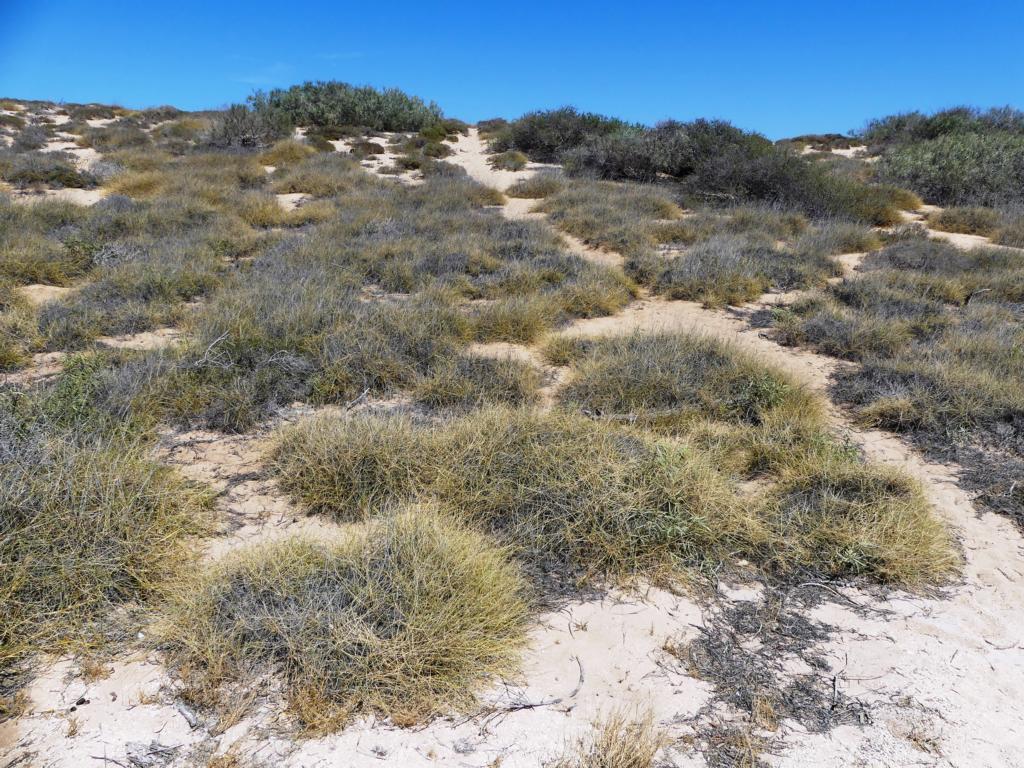
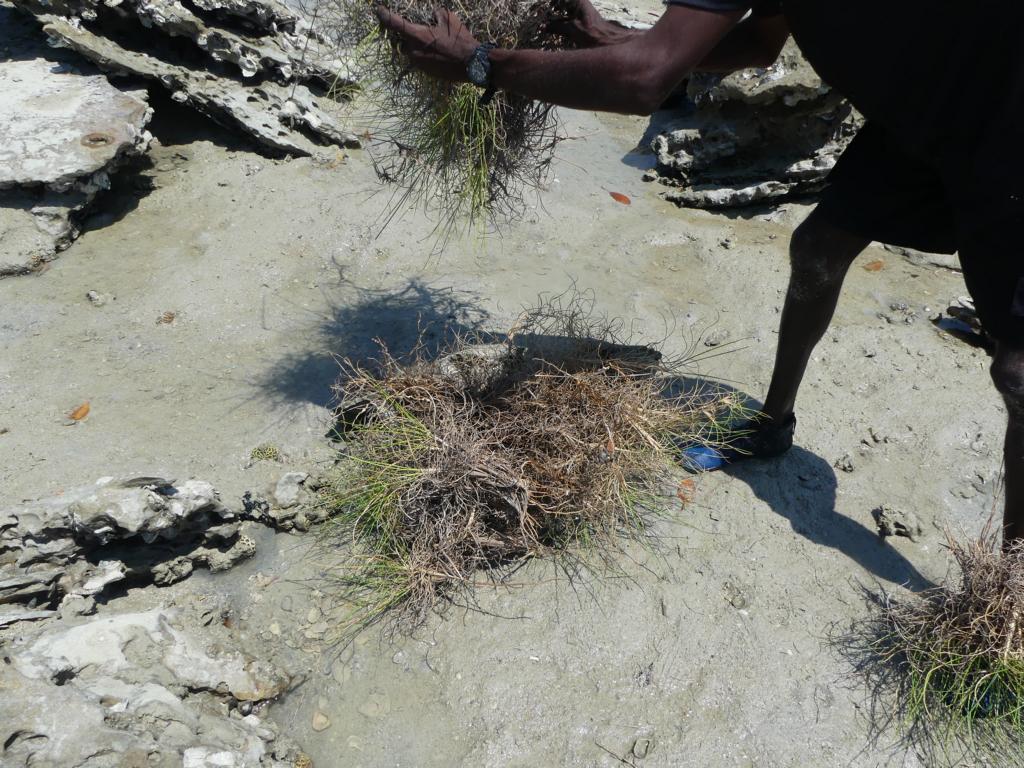
Our trial for harvesting rock oysters
For our experiment, we selected a small, water-exposed rock (about 80 x 30 cm) covered with rock oysters. We placed semi-dry spinifex grass on top of it. The roots and lower stems of this grass contain a resin that burns exceptionally well.
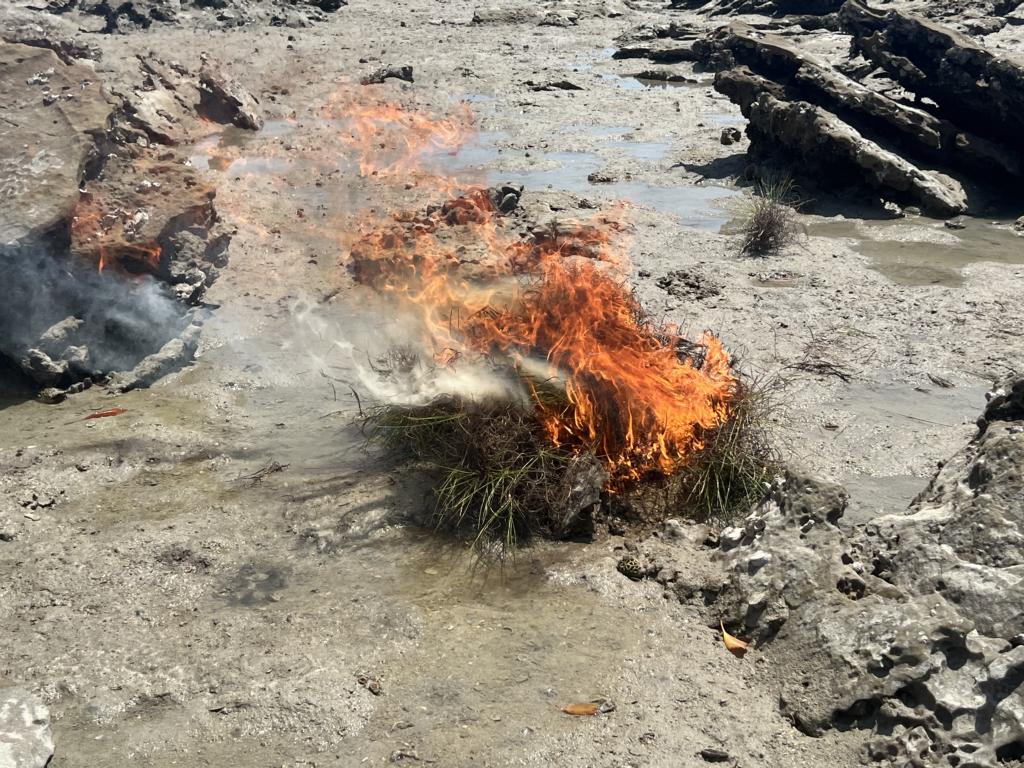
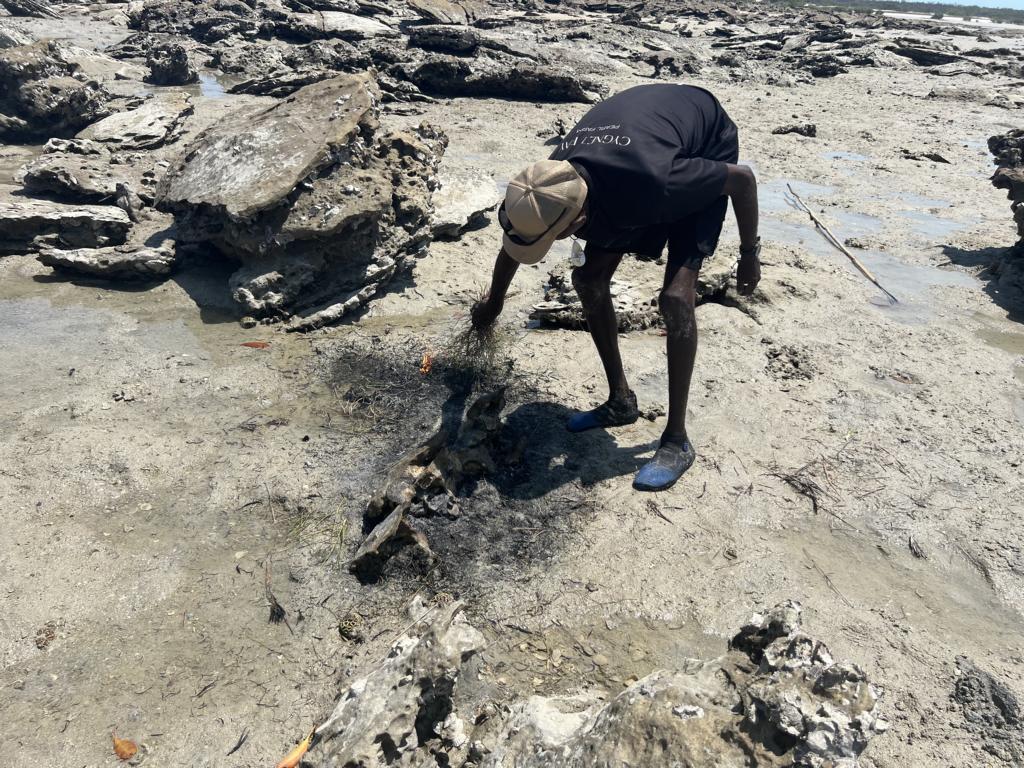
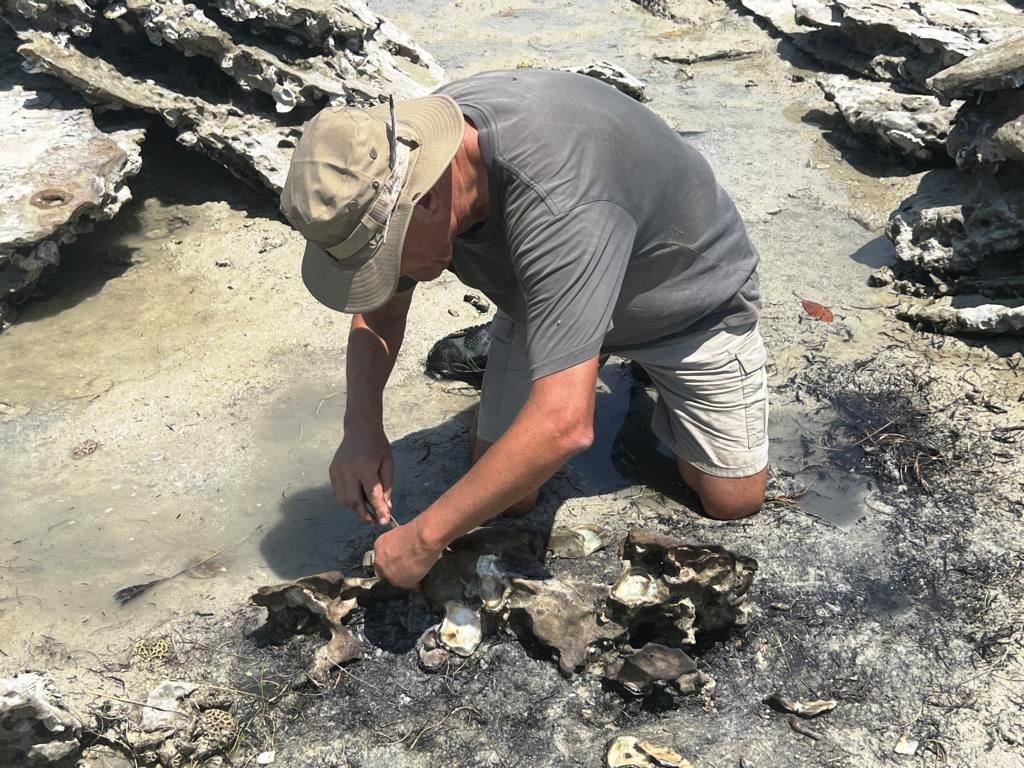
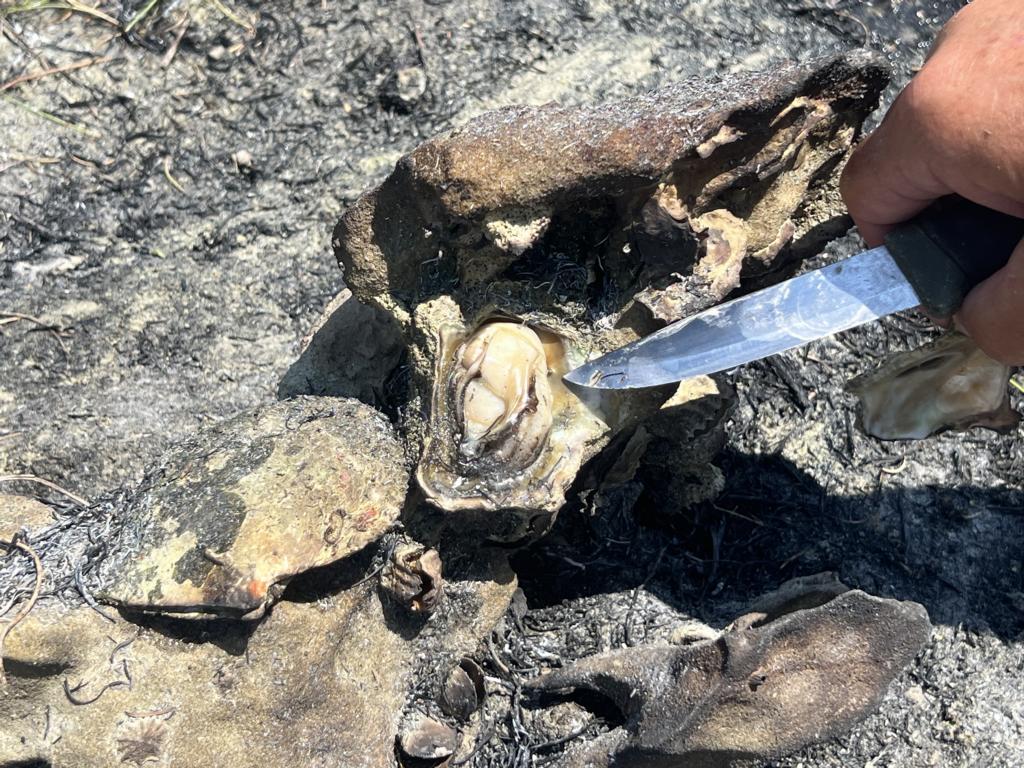
Before burning, we had estimated that about eight oysters were growing on the rock. However, after the burn, we discovered at least twice as many with opened shells. Many of the shellfish had been camouflaged against the rock, making them nearly invisible beforehand. Additionally, certain cockle species also opened, revealing shellfish we hadn’t seen before. In total, we harvested more than 20 bivalve mollusks from this relatively small rock—enough to satisfy both Terry and me.
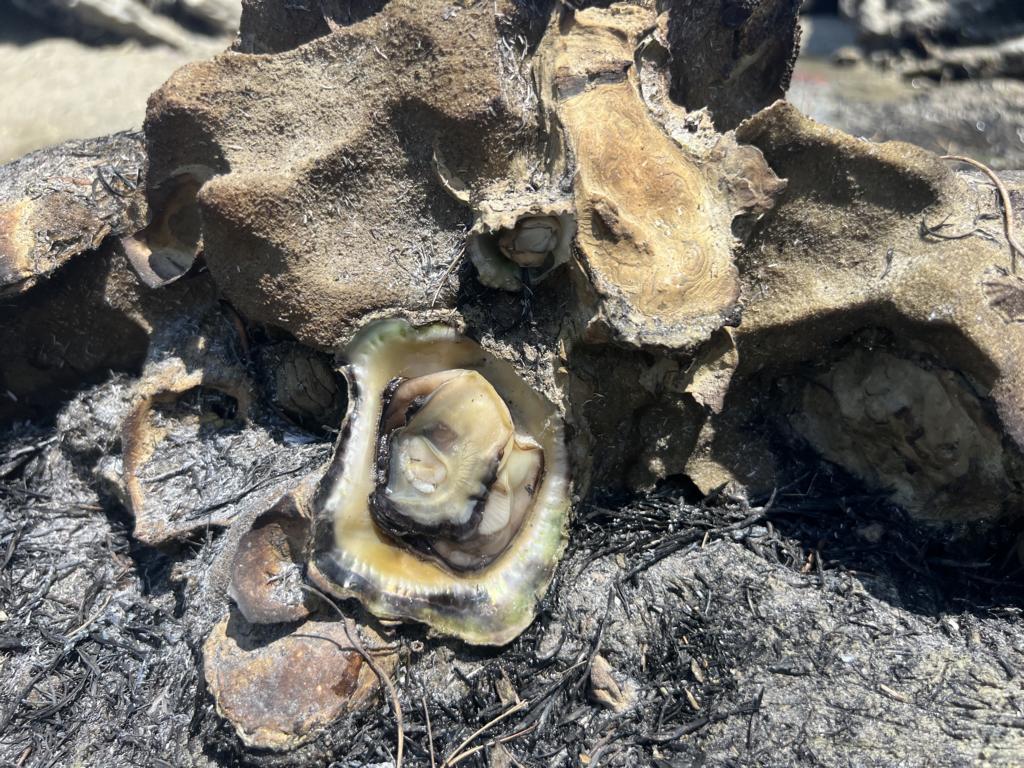
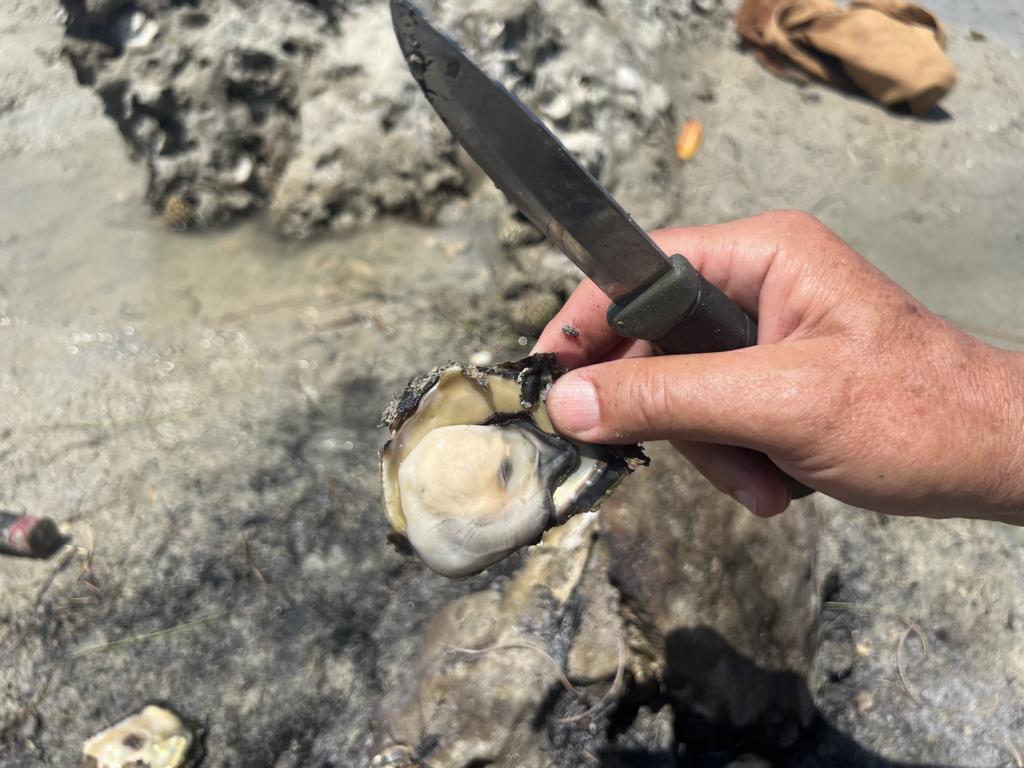
Rock oysters for food
Oysters opened by this method have a smoky flavor, and their texture is much firmer than when eaten raw. Additionally, the technique requires minimal effort compared to conventional methods, which involve using hammers and chisels to detach oysters from rocks.
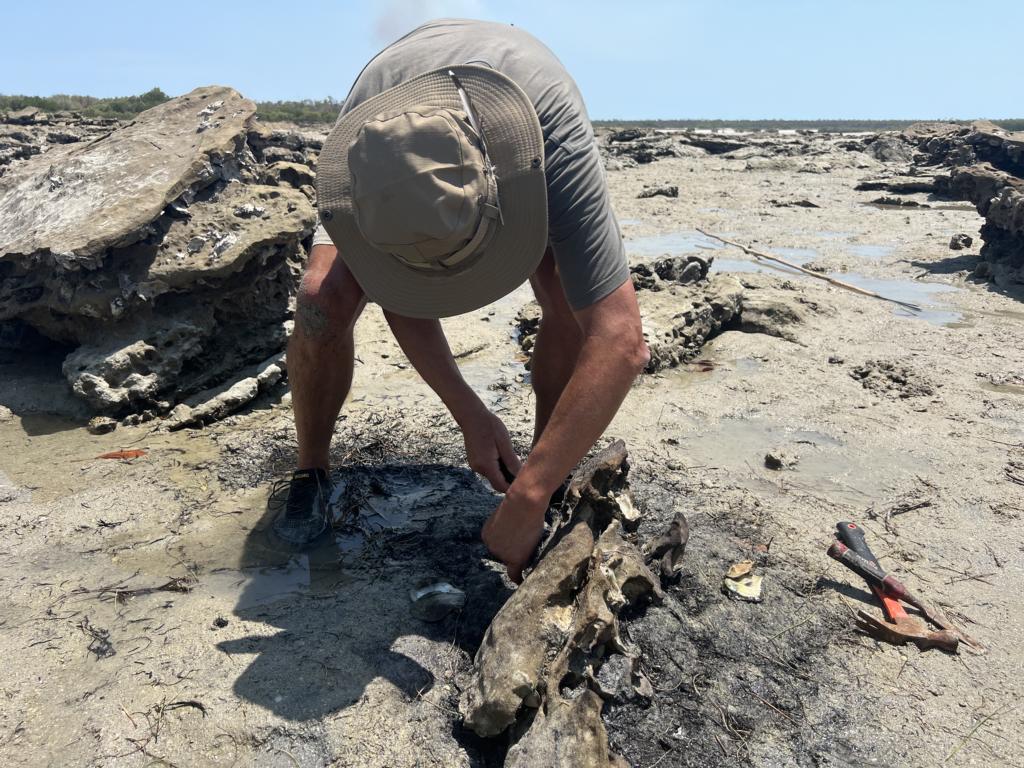
Nutritionally, oysters provide about 72 kcal per 100 grams, containing roughly 11 grams of protein, 2.2 grams of fat, and 2.3 grams of carbohydrates, along with high levels of sodium, phosphorus, calcium, magnesium, and zinc. While oysters are a protein-rich food, one would not typically consume 2 kg per day to reach an intake of 1,500 kcal.
Bardi people traditionally harvest rock oysters only during the full moon using this burning technique. They believe that free-swimming oyster larvae settle on the burned rocks exclusively during this lunar phase. Once attached, the larvae take about two years to grow into mature, harvestable oysters. This practice of limiting the harvest to once a month ensures sustainability.
Conclusion
My journey to Western Australia and my time with Terry Hunter provided a real insight into the traditional techniques of the Bardi people. The method of harvesting smoked oysters by burning spinifex grass is simple yet highly effective, demonstrating a deep understanding of and connection to the natural environment. What I found particularly compelling was the sustainable approach of the Bardi. In a world where overfishing is a major issue, their practice of harvesting only during the full moon highlights a more sustainable way of interacting with nature.
For me, this experience was truly special—not only because I learned from someone whose knowledge comes directly from his way of life but also because I rediscovered a technique that had captivated me in my younger years through Malcolm Douglas’ movies. It was inspiring to see how traditional knowledge remains relevant today and continues to provide value for living in harmony with nature.
Lessons learned about smoked oysters from the rocks:
- Rock oysters can be easily harvested by heat from a fire.
- This method works best in areas with significant tidal ranges.
- There are often more shellfish to be harvested after such a fire than initially anticipated.
- After using this method, the shellfish will attain a smoky flavor, and their texture will be firmer than with raw ones.
- Badi Indigenous people use this harvesting technique for sustainability only on full moon nights.
Further readings about Bivalves on the website:
An oyster species growing on Mangrove trees
White mussels at the Namibian coastline
Black mussels at the Namibian coastline
Beachcombing for Vongole clams in Northern Italy
Collecting Pipi clams at Rawai Beach
.

